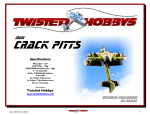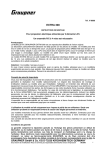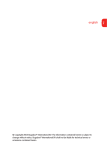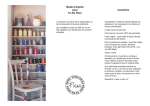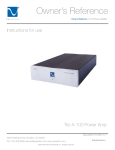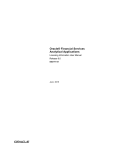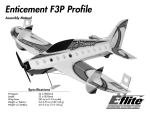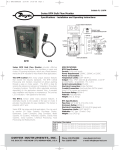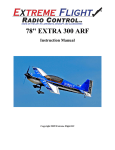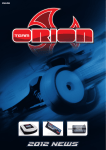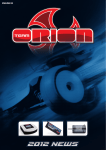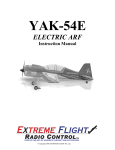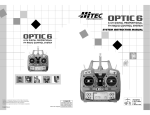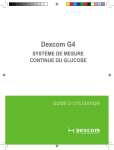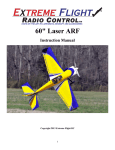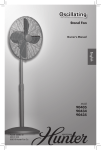Download Crack Turbo Beaver Crack Turbo Beaver
Transcript
Crack Turbo Beaver Instructions included for the Optional Float Kit USA Distributor 1450/1750kV motor (19g - 26g) 10 - 12 amp ESC 5 channel radio 4x 5g to 7g servos 2s/9x4.7 or 3s/8x4.3 prop Rev: 2013.09.15.v004a Twisted Hobbys www.twistedhobbys.com Wingspan = 35" Length = 30" AUW= 7 - 8oz 1 TABLE OF CONTENTS Page WARNING INFORMATION ....................................................................................................................................................... 3 SHIPPING DAMAGE.................................................................................................................................................................... 3 OUR MISSION............................................................................................................................................................................... 3 SAFETY NOTES............................................................................................................................................................................ 4 IMPORTANT: PRIOR TO ANY ASSEMBLY................................................................................................................... 4 KIT CONTENTS............................................................................................................................................................................ 5 OPTIONAL PARTS....................................................................................................................................................................... 6 TOOLS & ADHESIVES NEEDED .............................................................................................................................................. 7 THE BUILD.................................................................................................................................................................................... 8 CENTER OF GRAVITY ............................................................................................................................................................. 29 EXTREME & 3D SET UP PRECAUTIONS 29 CONTROL THROWS................................................................................................................................................................. 29 Extreme & 3D Beginner & Sport 29 29 FLAPS & SPOILERS .................................................................................................................................................................. 29 PRE-FLIGHT & TESTING ........................................................................................................................................................ 30 PREFLIGHT CHECKS Motor Flight Controls Batteries Radio Range Check FLIGHT TESTING STORAGE 30 30 30 30 30 30 30 30 NOTES & S/U SHEET................................................................................................................................................................. 31 TIPS AND TRICKS ..................................................................................................................................................................... 32 APPENDIX A ............................................................................................................................................................................... 34 FLOAT ASSEMBLY INSTRUCTIONS Rev: 2013.09.15.v004a 34 2 TWISTED HOBBYS Website: www.twistedhobbys.com – email: [email protected] Thank you for your purchasing a Twisted Hobbys’ model. Please read through the entire manual before beginning to build this model. If you have any questions please contact us at the above indicated email address. WARNING INFORMATION This R/C Aircraft is not a toy! Read and understand the entire manual before assembly. If misused, it can cause serious bodily harm and property damage. Fly only in open areas, and AMA (Academy of Model Aeronautics) approved flying sites. Do not over look the warnings and instructions enclosed or those provided by other manufactures’ products. If you are not an experienced pilot and airplane modeler you must use the help of an experienced pilot or an authorized flight instructor for the building and flying of this model aircraft. These instructions are suggestions only on how to assemble this model. There are other ways and methods to do so. Twisted Hobbys has no control over the final assembly, the materials and accessories used when assembling this kit, or the manner in which the assembled model, installed radio gear and electronic parts are used and maintained. Thus, no liability is assumed or accepted for any damage resulting from the use of the assembled model aircraft or from this instruction manual including but not limited to direct, indirect, incidental, special, and consequential damages. By the act of using this user-assembled product, the user accepts all resulting liability. In no event shall Twisted Hobbys’ liability exceed the original purchase price of the kit. SHIPPING DAMAGE Twisted Hobbys checks each plane before shipping to ensure that each kit is in fine condition. We have no bearing on the condition of any component parts damaged by use, modification, or assembly of the model. Inspect the components of this kit upon receipt. If you find any parts damaged or missing, contact Twisted Hobbys immediately. We will not accept the return or replacement of parts on which assembly work has already begun. Twisted Hobbys reserves the right to change this warranty at anytime without notice. OUR MISSION To provide the best products and service to our customers at the lowest prices possible. We take great pride in our company, our commitment to customer service and in the products we sell. Our online store is designed to provide you with a safe and secure environment to browse our product catalog. Thank you for shopping with Twisted Hobbys! Rev: 2013.09.15.v004a 3 SAFETY NOTES Before assembling and flying this model, read carefully any instructions and warnings of other manufacturers for all the products you installed or used on your model, especially radio equipment and power source. Check thoroughly before every flight that the airplanes’ components are in good shape and functioning properly. If you find a fault do not fly the model until you have corrected the problem. Radio interference caused by unknown sources can occur at any time without notice. In such a case, your model will be uncontrollable and completely unpredictable. Make sure to perform a range check before every flight. If you detect a control problem or interference during a flight, immediately land the model to prevent a potential accident. Youngsters should only be allowed to assemble and fly these models under the instruction and supervision of an experienced adult. Do not operate this model in a confined area. Do not stand in line with, or in front of a spinning propeller and never touch it with any object. IMPORTANT: PRIOR TO ANY ASSEMBLY Please Note: after removing kit from shipping box, lay each piece flat on a hard surface, this will allow the airframe to straighten out if lightly bent from shipping. Do not worry since EPP is very pliable and can be bent back if out of shape. Rev: 2013.09.15.v004a 4 kit contents PARTS LIST AIRFRAME COMPONENTS 1x 1x 1x 1x 1x 1x 2x 1x 1x 1x Wing (2pcs) Left Fuse Right Fuse Rudder Elevator Lower Fin LG Legs Wing SFG Kit Canopy / Cowl Nose Bulkhead kit Rev: 2013.09.15.v004a 1x 6x 1x 2x Antennalizer/Stack Kit Black Wheel Pieces Elev. Fin & Wing Fin Kit 1mm x 500mm Round (elev. & rudder control rods) 2x 1mm x 3mm x 250mm Rec (fuselage stiffener) 1x 2mm x 9mm x 800mm (wood wing spar) 1x Hardware Pack - see detail DETAIL - HARDWARE PACK 2x 2x 2x 1x 1x 1x 1x 1x 6x 4x 1x 1mm Dia x 49mm Carbon Rod (Aileron Control Rod) 2mm Dia x 40mm Carbon Rod (Wheel Axles) 1mm x 3mm x 125mm Carbon Rec (LG Stiffners) 1mm x 3mm x 150mm Carbon Rec (Elev Stiffner) Fiberglass Motor Mount Wood Wheel Hub Kit Plastic Horn Kit Plastic Control Rod Guide Kit (12 pcs) Snap links Quick Links with Screws and Keeper Rings Heat Shrink Tube (approx 40mm long) 5 OPTIONAL PARTS Crack Power Combo (Recommended by Twisted Hobbys) (1) (1) (4) (1) Crack Series 26g/1450kV Motor Crack Series 12A ESC 5g Micro Servos 9 x 4.7 Tuff Prop Blenderm tape is one of the best know tapes used for hinging and repairing your Depron or Epp models. Each roll consists of 1/2" wide x 4m in length Perfect choice for building and repairing your Twisted Hobbys EPP planes! This is the only adhesive you will ever need. Welder virtually bonds anything to anything! Clear, heavy-duty, flexible and water-proof when dry. Use indoors or out. (1) 1 oz tube Fly your Beaver off the water (or snow) with the optional Float Kit Specifications 6 Channel / DSM2 / 2.4GHZ 25mm X 19mm X 11mm Weight: 3.0g / Input: 3.5–9.6V Bind plug included Rev: 2013.09.15.v004a CA and Kicker Various thickness CA glues and Activator available from Twisted Hobbys’ Note: many of these “optional parts” shown or similar items, may be available from the Twisted Hobbys’ web store. 6 Tools & Adhesives Needed • Lighter • Small drill bits • Tape Measure and Ruler • Black Sewing Thread • Welders Glue • Hobby Knife w/new Blade • Needle Nose Pliers • Wire Cutters Tools shown and listed are suggestions only. Depending on your building technique you may not need everything indicated – and/or – you may find that other tools available to yourself may be of benefit to your Build. It is also recommended that you have a flat building surface, one that will accept stick pins and push pins. An Acrostic Ceiling panel from your local hardware store fits this bill nicely, and will lay flat on your work table. Over size / long push pins are available at your local craft store. These two items are by no means required, but will aid in the building process, and can be used for future projects. Rev: 2013.09.15.v004a • Low Temp Hot Glue Gun • Course Sand Paper • Scissors • Small Phillips Screw Driver • Thin & Medium CA • CA Applicator Tips • Activator 7 THE BUILD CONSTRUCTION METHODS: Building surface should be at least 2ft x 4ft and flat. Weights or some small heavy objects will be handy for holding things in place during the time glue is setting. Welders glue is the primary adhesive used for this build. The Rod Guides and End Links use thin CA with Applicator and Activator. When using the Welders glue for a butt joint, apply a thin film to each surface, allow to sit for approx five minutes and then assemble. Note that this method will create a nearly instant bond, so locate carefully when bringing the two pieces together. If alignment is necessary or a slip joint, do not allow the glue to tack up, simple apply and join immediately, you will have several minutes to locate the two parts before the glue sets up. In most cases the parts being glued can be handled with care in 30 minutes, full cure is approx 24 hours. Open up you kit and inspect for damage and / or missing parts. Use the Parts List on page 5 to verify that your kit is complete. Rev: 2013.09.15.v004a Do the same with the Power Set, confirm that you have all your items and that they appear to be in sound condition. Testing of functionality will be one of the first steps that will follow shortly. 8 Make a new program in your Radio. Zero all the Trims and Subtrims. For starters all the ATVs can be set to 100%. Adjustment of additional settings will be done at the end of the build. Identify the porper pins for the; Throttle, Aileron, Elevator and Rudder Channels. Carefully compare to the diagram to make sure you have the correct orientations. Compare your Reciever to the included diagram from the side as shown above. Make a note of the polarity of the pins. In most cases, either Black or Brown is used to identify Negative (-). Plug Motor wires into the ESC, the ESC into the Throttle Channel, and the servos to their appropriate channel. Bind per your Radio’s Instructions. Program the Throttle End Points per the ESC Instructions and next couple steps…. turn on your radio and move the throttle stick to "full throttle" position... Rev: 2013.09.15.v004a 9 …. reconnect the battery to the ESC and listen for two quick short beeps, immediately following the beeps, move the Throttle stick to low position. Next you should hear a series of tones to indicate that programing is complete. Re-bind the system and double check correct operation of all components. Center all servos as close to 90 deg as possible. Install the Longest single arms on the servos. Program your radio so that the channels & directions match the picture above. Installed horns as shown, dbl check that subtrims - arms should be at 90 deg - mark the servos Rev: 2013.09.15.v004a Fold all the hinged parts over onto themselves and let sit for an hour or so. Locate the control rods and snap links. Chose Flaperon Wing Type - this will allow you to mix up and down aileron with elevator and to use Flaps, more detail on that later in the manual. After these are glued together, they must dry for at least 24 hours, so build them now. 10 Dip the end of the control rod approx 1/2" into the Welder's nozzle to achieve a nice even coat of glue. Apply a medium bead of Welders to one edge of the wing halves. Rev: 2013.09.15.v004a Attach one of the snap links to the end of the glue coated rod. Note that the snap link has a small saddle that will craddle the rod. Repeat for the other rods and set aside to dry for 24 hrs Remove all the little pieces from the cut outs in the wing halves. Do not remove the tabs in the wing spar slot at this time Bring the two pieces together, then seperate. Repeat this 2 or 3 times until the glue is evenly distributed on both edges... let the glue tack up for about 5 minutes. Once the glue is tacked up bring the two halves together, make sure that the dimples and spar slots line up with each other 11 Remove the webbing from the spar slot. Spread the slot apart and test fit the spar. Rounding the ends of the spar will help it slide into the slot a little easier. Coat both sides of the spar with a medium bead of Welders Install the spar into the wing slot, make sure you have a good solid bond between the wing and spar. Weigh down or push pin down to work surface. While the Wing is drying, install the landing gear sturts to the fuselage halves as shown. Use the tack up method. Rev: 2013.09.15.v004a 12 One fueslage half gets split as shown. It is the one that has the little tick marks at the center of each tab. Locate the four landing gear strut spars. Test fit. Force glue into the provided slot and lay carbon spars in as shown. Note that on one side the spar sticks out. Also, keep the lengths at the LG end so the stick out the same amount. Put a little weight on the parts and let the glue dry. Build the wheel assemblies next. Break all the parts out of the Wheel Wood Kit. Note that each tire will have two donuts and one solid epp piece. Spread an even coat of Welders on the mating surfaces. Assemble while the glue is wet so that you can make adjustments for axle alignment. Rev: 2013.09.15.v004a 13 While the glue is still wet on the EPP pieces, install the wood hubs on the front and back, again wet and with a medium coat of Welders. Install one of the axles thru the center of the hubs to insure the concentricity of all the parts. Adjust by sliding the parts around as necessary Repeat with the other wheel and set aside under some weight to dry. NOTE: Once the carbon strips have dried in the struts, test fit the little axle holders into the ends. Note that they are not symetrical. Rev: 2013.09.15.v004a Let the finished assmbly dry for a bit. We will wrap this area with thread and glue in a later step. READ OVER THE NEXT SIX STEPS. FULLY UNDERSTAND AND TEST FIT HOW THE FUSELAGE PIECES FIT TOGETHER. THIS IS A UNIQUE DESIGN AND MUST BE DONE PROPERLY FOR A SQUARE AND TRUE AIRFRAME. 14 Fit the right lower fuselage part together with the full fuselage side. Note that the spar from the right side sticks thru the hole.... .... and behind the spar of the full section. The foam tab and slots should line up better with the spars situated in this configuation. Fully engage the tabs and slots, taking note of how it all goes together. Continue to test fit the upper fuselage half, taking not of how the open spar fits into it's slot as the EPP tab and slots are joined together. Check that everything fully seats into their respective areas and that the orientation of parts matches the manual photos Make sure the pieces all match together at 90 degrees to one another. Now that you know how it goes together disassemble and glue all the mating surfaces per the next couple steps. Rev: 2013.09.15.v004a 15 Apply glue to all the mating surfaces of the lower fuselage section as well as all the mating tabs and surfaces. Fit together as per the test fit remembering to keep the free end of the one spar behind the one in the full fuselage section. Make sure all is square and fully seated. With the nozzle of the Welder's tube, force a small bead of glue into the slot fo the strut spar. Fit the top fuselage section together as in the test fit and make sure all joints and tabs are fully seated. Make sure everything is square. Let this assemlby dry for about an hour before handling. One the glue on the fuse has set up enough to handle, remove any extra length of the spar from the end of the landing gear as shown. Rev: 2013.09.15.v004a 16 Loosely fit the axle and one of the hex nut shaped wood piece as shown above. Note that some sticks out to the inside and that it angles down to the work surface as shown. When the glue has set up enough to handle, soak the axle area behind the nut with Welders and wrap with thread. Rev: 2013.09.15.v004a Top View of axle alignment. While in this position apply some Welders and allow it to set up for a couple hours. If in a hurry CA could be used. Repeat for the other side. Completed View. Add additional Welders for full coverave of the whole area as needed. Note - Keep the axle area where the wheel mounts free of glue. Repeat for other side and let dry. While the Axles are drying, you can cut appart all the little foam pieces, and install the elevator spar. 17 All the pieces seperated and ready for assemlby in later steps Check fit of the elevator spar, then with the Welder's nozzle, force a small bead of glue into the slot for the elevator spar. Install the spar, wipe away any extra glue and set aside to dry. Locate the fiberglass motor mount and roughen up the back side with some course sandpaper or a file. Apply a medium coat of Welders to the roughen side of the mount.... .... and to the mating surface on the nose of the fuselage. Let the glue tack up for 10 minutes. Rev: 2013.09.15.v004a 18 Once the glue has tacked up, stick it to the mating surface on the nose. The small cowling part is next. Seperate it from the larger part, and glue to the nose, directly behind the motor mount. This can be installed wet. Tail Control Horns. There are two the same, these are for the aileron, the single shorter one is the elevator, and the longer single one is the rudder. Squirt some Welders into the slot and install the horn as shown, flush with the top, wipe away any extra glue. Check on the under side that the contour of the horn matches the contour of the horn, they should be flush, doing this ensures that the hole in the horn aligns with the hinge line. Rev: 2013.09.15.v004a 19 Repeat the process with the Rudder Horn. Make sure that the contour of the horn matches up with the inside of the hinge for proper horn alignment. The two remaining horns are for the ailerons. They will be installed from the underside of the wing. For mild control throws, install the horn so that it is flush with the near side as shown, or the underside of the wing. For Wild and 3D control throws, install the horn so that it is flush with the far side as shown, or the top of the wing. Test fit the elevator and rudder together. These two pieces will be glued together BEFORE attaching to the fuselage. Rev: 2013.09.15.v004a 20 Glue the two piece together, making sure they are square to each other. Let the assembly dry for an hour or so before handling. Rev: 2013.09.15.v004a Set them aside to dry. Add the lower rudder fin. This is also the time to glue the bottom of the rudder to the back of the fuselage. Once dry the tail assembly can be jointed to the fuselage. Do not put glue on the bottom most part of the rudder, this will be glued with the fin. Install the ESC. In this case the ESC will be installed under the cowling, but in warm areas it should be left in the open, exposed to good airflow. 21 Make sure that the rudder and fin are straight to each other and allow to dry. Install the tail servos. Body of the servo should be flush with the outside of the fuselage and servo arms centered and attached. Intall the motor. Tail Control Rods and Guides are next. If you did the snap links with Welders at the beginning of the build and it has been 24hrs, they are ready to use. Also locate the plastic guides. Find and test fit all the guides into their respective hole in the fuselage. If you can't see the holes at first, use a flashlight or hole the fuselage up to a light source. Once all the locations have been determined, remove the guide one by one, squirt a little Welders into the hole and re-install the guide. Once all the guides are glued, use the control rod to help align them all Rev: 2013.09.15.v004a 22 Install the adjustable links, install the control rod. Snap the other ended into the surface horn, center servo and control surface. Snug the set screw. Trim rods leaving about 3/4" extra. If adjustments need to be made after the build is complete, there is still access to the adjustable link from the outside of the fuselage as shown above. Locate your wing servos and the short control rods that were made at the beginning of the build. Servos install flush with the top of the wing. Route wires in the pre-cut slots. Attach the quick links to the servo arms and the snap links to the aileron control surface horn. Make sure the servo and ailerons are neutral, snug up the set screw, snip off any extra length. Ideally the servo arm and the control rod should form a 90 degree angle, or at least something close. Locate the elevator side force generators. These glue on to the inboard side of the counterbalance area of the elevator, there is a tab to help with location and position. Rev: 2013.09.15.v004a 23 Coat all the mating surfaces with glue and install as shown. Use stick pins or tape if necessary to hold in position while the glue sets up. Top View.... double check that the elevator SFG's are parallel to the fuselage and perpendicular to the elevator. Install the wheels onto the axles. Holes may need to be enlarged slightly. Press the wood nut onto the axle. In many cases the nut will not need any glue to keep the wheel on, and if flipping back and forth between wheels and floats, this will make it easier. Rear Cowling Bulkhead. Use the cowling cover shown in the foreground as a guide on how far back to locate the rear cowling bulkhead. Glue the rear cowling in place. Note, if locating the ESC in this area, make sure and remember to make clearance for the wires. Rev: 2013.09.15.v004a 24 Locate the Antalizer and glue it to the rear center fo the wing assembly. Make sure it is square to the wing. Prepare to install the wing by hooking up the aileron servo wires to the RX. Make sure that when you locate the RX that you can still reach the bind plug slot. Apply a nice thick bead of Welders to the saddle area of the fuselage. Attach the wing using the edges of the saddle in the fuselage as a guide. Measure from the tip of each wing to the tip of the rudder to verify that the wing is located squarely. Prepare to install the Wing's Side Force Generators. Inboard-Forward piece is installed as shown. Rev: 2013.09.15.v004a 25 Locate the rear-ward piece as shown, repeat for the other side. Split the out-board SFG's as shown. With a left over piece of carbon from the tail push rods, make a tail skid Poke a hole in the rear of the lower fin, coat the end of the rod with Welders and install as shown. Rev: 2013.09.15.v004a Install into the provided slots. Make sure the are parallel to the fuselage and square to the wing. If you have already programmed your ESC, you can install the cowling cover now. It could also be installed after the maiden flight. 26 Cowling installed Windscreen can also be installed now. For 3D and Extreme flying, leave this part off. For Sport and Trainer flying it can be installed. Install the turbo exhaust stacks as shown. Final Notes: Determine battery location to get proper Center of Gravity (approx 2-3/16" back from the leading edge) Best CG location depends on flying style. Rev: 2013.09.15.v004a Balance a prop, double check all the control directions and double check for correct motor rotation. Go Fly and Enjoy! The Turbo Beaver is a very durable plane and will take all the abuse of hard 3D flying or the not so soft landings of a new pilot. There is also an optional Float which can be a lot of fun. If installing the floats, make sure and water proof your electrical components. 27 This completes the build. With this plane there are lots of programming options for flaps and spoilers available depending on how you want to fly and the tricks you are interested in doing. For some suggestions on this and other radio programming features see the "Flaps & Spoilers" Section on the next page. Sample shown is from a DX8, other Radios will be similar. Another really good source of information for this and other Twisted Hobbys' planes is RCGroups. The link for this plane, the Crack Turbo Beaver is www.rcgroups.com/forums/showthread.php?t=1991265 Rev: 2013.09.15.v004a 28 Center of Gravity Control Throws CG - 2.187" from leading Edge of Wing Ailerons - approx +/- 40 deg Rudder - approx +/- 40 deg Elevator - approx +/- 40 deg Expo to suit Extreme & 3D: Beginner & Sport: Ailerons - approx +/- 20 deg Rudder - approx +/- 20 deg Elevator - approx +/- 20 deg Expo to suit Locate all the electronic to achieve indicated CG point. Use Velcro for initial flights for battery mounting and experiment with it's position until you have determined the best spot for your flying style. For best 3D performance a slight touch of down elevator will be needed for inverted flight, and power off down line should be straight down without any pull or tuck FLAPS & SPOILERS Flap System Norm: Mid: Land: Speed: Flap 75% 0% -75% Norm Elev 0% 0% 0% Sw: Flap EXTREME & 3D SET UP PRECAUTIONS In order to achieve the control throws as suggested above described for “Extreme & 3D”, it is imperative that the control surface, linkages, rod ends, etc, all move freely over the entire range, including range end points. Failure to do so will result in damage to either the servos or mechanical components Rev: 2013.09.15.v004a Spoiler Mix Settings Mix 1 ELE > LAL Rate: 75% 75% Offset: 0% Trim: Inh Sw: FM 1 Mix 2 ELE > LAL Rate: -75% -75% Offset: 0% Trim: Inh Sw: FM 2 29 PREPRE-FLIGHT & testing Preflight Checks Flight Testing Motor: Should run smoothly at all stick positions, and The first flights should be done with the CG at the recommended position, and reduced control rates until comfortable with your handling of the aircraft. As your experience with the aircraft grows experiment with different CG points and control rates. After all flights, check the aircraft over for damage and/or other items that may adversely affect flight performance. transition smoothly from low to high RPM. If the motor is turning backwards, reverse two of the three wires between the motor and ESC. Check that the screws holding the motor to the airframe are tight and secure. Flight Controls: Set all to neutral or level positions with sticks in the neutral positions. Ensure that all controls and linkages move freely. Double check that all hinged areas are free from rips or tears. Verify proper control surface directions. Right Roll is – right aileron up, left aileron down, Left Roll is left aileron up and right aileron down. Batteries: Should be fully charged prior to each flight. Watch transmitter battery level and follow manufactures recommendations. Motor battery should not be drained any further than recommended by the manufacture, use a timer to prevent an over discharged condition. This Extreme 3D Plane is a full performance aircraft and will provide hours of entertainment, including the occasional crash. If, as the result of a crash, the foam tears, simply glue with Welders or CA. Many pilots prefer Welders because it remains flexible after drying. CA however, is more suited for the “quick” repair. This aircraft can be flown indoors or outdoors. It is the perfect size for the local park or school yard. Radio: All trims should be set to neutral and throttle in the low position. Check that rate switches and mixes are set properly. Storage Range Check: With and without the motor running per This EPP plane should be stored resting it's landing gear or hung from the prop. Storing in other fashions that put stress on the airframe could cause the airframe to distort. Storage in a hot car could also cause damage. radio manufactures instructions. If there is insufficient range or significant reduction with the motor running, resolve and re-test before flying. Be safe and enjoy, thank you again for purchasing a Twisted Hobbys’ Product! Rev: 2013.09.15.v004a 30 NOTES & s/u Sheet Rev: 2013.09.15.v004a 31 TIPS AND TRICKS TRICKS • A good building surface is “drop ceiling” panel from a local hardware store on a nice flat board • Use parchment paper between the areas being glued and your work surface • Heavy flat objects (like books, batteries, etc.) could be used to hold everything flat • When resetting your radio, start with all the ATV’s or throw volumes at 100%. • Make sure you have set the direction of the servos correctly before attempting to trim for zero position. • If possible try the servo horns in different locations to determine which position will require the least amount of sub trim. • Installing the servo horns in their final location and attaching quick links to the servos may make servo installation much easier later. • On the Orange Rx, the negative pin is the one closest to the flat side of the circuit board. • Keep a good supply of sharp knife blades handy when building a foamie airplane. • Use low temp hot glue for gluing electronics, this will allow for easy removal later if necessary. The low temp hot glue can be “released” by painting” the glue bead with an alcohol soaked cotton swab a couple times. • A business card with the corners clipped off can be used as a small square. • Allowing the Welders glue to set for five minutes before assembly will shorten the tack up time, just be sure if doing it this way that you get the parts into position quickly, as the glue will start to bond on contact. Any joints that you feel are going to require adjustment, it is best to assembly the pieces while the glue is wet. The Green (high tack) masking tape works the best when used to clamp things together on an EPP foam airplane. • When gluing the rudder to the fuselage, stick pins could be used to hold in position if wanting to handle the airframe before it is completely dry • A rotary tool with a cutting wheel could be used to produce grooves in fiber glass parts instead of coarse sand paper. Use a hatch pattern. This creates more bonding area for the glue. Rev: 2013.09.15.v004a 32 …Enjoy! Rev: 2013.09.15.v004a 33 Appendix A Float Assembly Instructions Rev: 2013.09.15.v004a 34


































